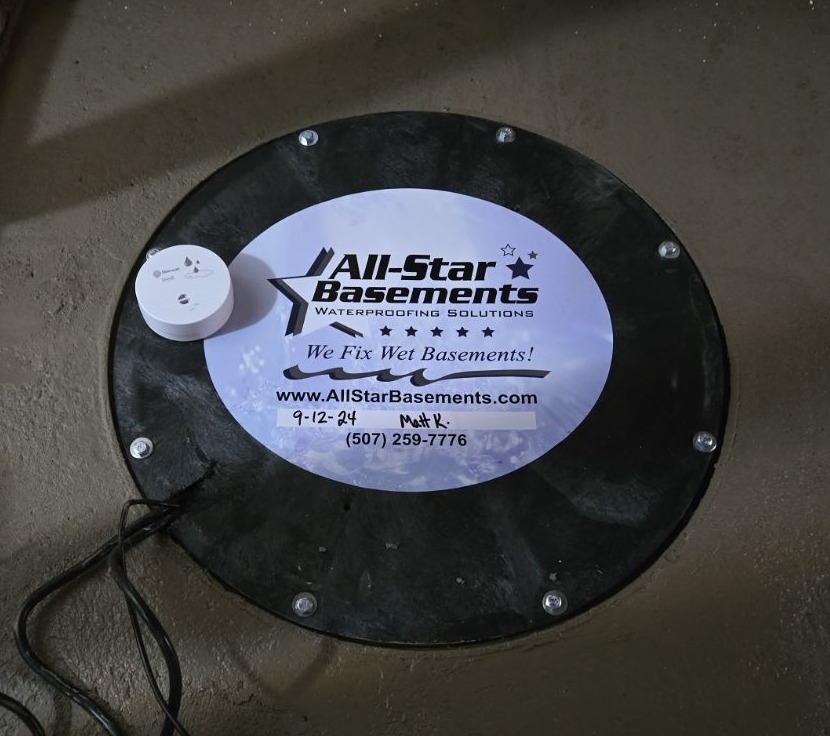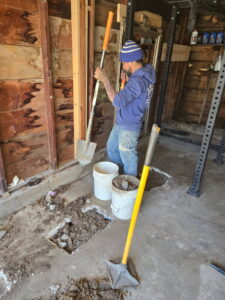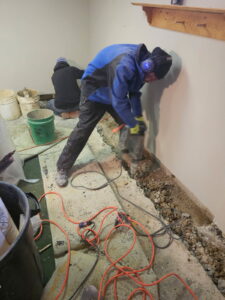
As rainy seasons approach, it’s crucial you’re well-versed in sump pump maintenance. Regular inspections and cleanings can save you from the hassle of a flooded basement. Is your pump activating quickly when water enters the sump pit? Are the float switch and power source functioning correctly? Perhaps you’ve considered a backup system, but aren’t sure where to start. It’s time to transform your preventive maintenance, not only to avoid costly damage, but to extend your sump pump’s lifespan. Don’t you want to learn how?
Key Takeaways
- Regularly inspect your sump pump, especially before the rainy season, to detect malfunctions early and prevent costly damage.
- Ensure your sump pump’s power source is reliable and consider a backup system for pump failures during heavy rain.
- Clean the sump pit and pump to remove debris and sediment that could hinder its operation during rainy seasons.
- Check the float switch operation and keep the area clear of debris for optimal performance during high water influx.
- Engage professional services for seasonal checks and potential upgrades to enhance the efficiency and readiness of the sump pump for the rainy season.
Understanding Your Sump Pump
Before diving into maintenance tips, it’s crucial to understand your sump pump and how it works. Sump pumps are ingenious devices designed to keep your basement or crawl space dry. They’re installed in the lowest part of your home, typically in a specially constructed sump pit. When water enters this pit, your pump kicks in, expelling the water and preventing damaging floods.
Now, there are different sump pump types, each with its own set of pros and cons. Submersible pumps, as their name suggests, are designed to function underwater. They’re quite powerful, but they tend to be pricier than their counterparts.
On the other hand, pedestal pumps are less expensive and easier to maintain, but they aren’t as robust. The choice between the two will depend on your specific needs and circumstances.
Sump pump installation isn’t a DIY task for the faint of heart. It requires specialized knowledge and tools. It’s recommended that you hire a professional to ensure the job is done correctly.
After all, an incorrectly installed sump pump can cause more problems than it solves. Without proper installation, you risk flooding, motor burnout, and other significant issues.
Regular Inspection Schedule
Setting a regular inspection schedule for your sump pump is crucial to ensure its optimal performance.
We’ll discuss how often you should inspect it under ‘Inspection Frequency’.
Then, we’ll move on to ‘Key Inspection Areas’ to guide you on what specific parts you need to check during these routine inspections.
Inspection Frequency
To keep your sump pump in working order, it’s necessary to inspect it regularly. Regular inspections are a significant part of your seasonal preparation, which ultimately ensures the functionality of your system during the rainy season.
The frequency of these inspections depends on several factors. If your area is prone to heavy rainfall, you might need to inspect it more often, say, every few months. However, if you live in an area with less rainfall, then a bi-annual or annual inspection could suffice.
Common malfunctions in sump pumps often go unnoticed until it’s too late, causing unnecessary damage and expense. That’s why regular inspections are vital. They help you identify and rectify these malfunctions promptly, thus extending the lifespan of your pump.
Key Inspection Areas
Knowing what to look for during these regular inspections can make the process much easier and more effective.
It’s not just about prolonging your sump pump lifespan, but also preventing common issues that can cause major headaches down the line.
Consider these key areas for inspection:
- Pump operation: Check for any unusual noises or vibrations when the pump is running. If it’s silent or overly noisy, there might be a problem.
- Float switch: This component controls when the pump turns on and off. Make sure it moves freely and doesn’t get stuck.
- Discharge line: Look for any blockages or leaks. Water should flow freely when the pump is operating.
- Check valve: This prevents water from flowing back into the sump pit. Ensure it’s functioning correctly.
- Power source: Check the power cord for any damage. Also, make sure the pump is plugged into a working outlet.
Checking the Power Source
Before jumping into any heavy-duty maintenance, let’s start by ensuring your sump pump’s power source is in good working order.
Power source reliability is crucial for sump pump efficiency. If the power source isn’t reliable, your sump pump might fail when you need it the most, turning a rainy season into a homeowner’s nightmare.
First, check the plug. Ensure it’s securely plugged into a grounded, GFCI-protected electrical outlet. If you find any signs of wear or damage on the cord, you’ll need to replace it immediately.
Loose or damaged cords can cause power interruptions, reducing your sump pump’s efficiency.
But don’t stop there. You should also inspect the power source for any signs of rust or corrosion. This could be an indicator of water leakage, which could potentially lead to a power outage.
If you spot any rust, it’s time to call a professional.
Additionally, if your sump pump relies on battery power, check the battery’s condition. A weak or dead battery won’t do you any good when a big storm hits.
Make sure it’s charged, and replace it if necessary.
Testing the Sump Pump
After ensuring the power source is reliable, it’s time to give your sump pump a test run. This is a crucial step in maintaining the sump pump’s lifespan. No matter the sump pump types you have, a pedal, submersible, or backup, conducting a test will help you understand if it’s functioning properly.
Here’s a simple guide on how to test your sump pump:
- First, locate your sump pump. It’s typically in your basement or crawl space.
- Pour about five gallons of water into the sump pit. Be careful to not overfill it.
- Watch the float rise. This should trigger the sump pump to start.
- Observe the water level. If the pump is working, it should quickly lower.
- Lastly, listen for any strange noises. Odd sounds might indicate a problem.
Cleaning the Sump Pit
Regular maintenance of your sump pit is just as important as testing your sump pump. It’s crucial to keep your sump pit clean to ensure the efficiency of your drainage system, especially during the rainy season. If left unchecked, debris and sediment can accumulate, hindering the pump’s performance.
Cleaning your sump pit isn’t as daunting as it sounds. You’ve got this! First, disconnect your pump and remove it from the pit. Use a wet-dry vacuum to suck up any sludge, dirt, gravel, or other debris that’s settled at the bottom. Remember, the cleaner your sump pit, the better your pump will run.
Once you’ve vacuumed, inspect the pit for any cracks or damage. If you spot something, don’t ignore it. Small issues can escalate quickly and compromise your entire drainage system.
Lastly, clean the sides of your sump pit with a stiff bristle brush and a mild detergent. Rinse it thoroughly and let it dry before reinstalling your pump.
Ensuring Proper Float Operation
Just as you’ve shown your sump pit some TLC, it’s time to give your pump’s float switch the same attention. This little device triggers the pump to start working when water levels rise, so it’s crucial to ensure proper float operation.
Start with a float adjustment. Inspect the float. If it’s not rising and falling with the water level, it’s stuck, and you’ll need to adjust it. A simple way to do this is to gently bend the float arm. However, be careful not to apply too much force as it could break.
If the float adjustment doesn’t solve the problem, consider a float replacement. If your float switch is frequently stuck or malfunctioning, replacing it may be the best option.
Let’s go over some key steps to ensure proper float operation:
- Regularly check the float switch for any visible damage.
- Test the float switch frequently by filling the sump pit with water.
- Make necessary float adjustments if the switch is stuck.
- Consider float replacement if the switch is frequently malfunctioning.
- Keep the float area clean and clear of debris.
Checking for Clogs and Blockages
Your sump pump’s efficiency can be significantly hampered by clogs and blockages. This common sump issue can be caused by various factors such as accumulated dirt, debris, or even small stones.
It’s crucial to inspect your sump pump regularly, especially before the rainy season, to ensure it’s free of any obstructive elements.
Begin your inspection by removing the sump pump cover. Use a flashlight to examine for any visible obstructions. If you spot any, carefully remove them, ensuring you don’t damage any sump pump accessories in the process.
Next, inspect the intake screen. This component often collects debris and can easily become blocked. If it’s clogged, clean it thoroughly.
Remember to also check the discharge line. If water isn’t flowing freely, there could be a blockage. You might need a professional’s help to clear it.
If you’re still experiencing issues after checking for clogs and blockages, it might be time to call in a professional. Neglecting to address these issues can lead to significant water damage.
Installing a Backup System
Often, having a backup system for your sump pump isn’t just a good idea, it’s essential. Rainy season can be unpredictable, and a primary pump failure during a heavy downpour can result in a flooded basement. That’s where a backup system comes in, providing the extra assurance you need.
There are several backup pump options to consider. You could opt for a battery-operated backup pump, which can work for hours even during power outages. Alternatively, a water-powered backup pump, while more expensive, doesn’t rely on electricity and can operate indefinitely.
Here are some reasons to install a backup system:
- Redundancy: If the primary pump fails, the backup kicks in.
- Greater capacity: Dual system benefits include handling larger volumes of water.
- Power outage solution: Backup pumps can operate during blackouts.
- Longer lifespan: Distributing the workload between two pumps can extend their life.
- Peace of mind: Knowing your basement is protected, even in the worst weather.
Don’t wait for a rainy day disaster. Install a backup system now and save yourself the headache and cost of a flooded basement.
Professional Maintenance Services
While installing a backup system is a proactive step in sump pump maintenance, it’s not the only measure to consider.
Professional maintenance services offer a range of benefits to ensure your sump pump’s optimal performance. They’re especially handy when it comes to sump pump upgrades and seasonal preparations.
You might think you’re saving money by handling the maintenance yourself, but when you consider the potential cost of a failure, it’s an investment worth making.
A professional service checks all the intricate parts of your sump pump system, identifying and rectifying issues you might miss. They’ll provide upgrades ensuring your system is up-to-date, efficient, and effective.
Seasonal preparations are another area where professional services shine. They’re well-versed in the pitfalls of each season and can provide expert advice and action to keep your sump pump working smoothly.
Whether it’s preparing for the rainy season or winter freezes, they’ve got you covered.
Don’t underestimate the value of professional maintenance services. They’re a key part of your sump pump’s health, ensuring it’s ready to face whatever the weather throws at it.
Frequently Asked Questions
Can a Sump Pump Operate During a Power Outage?
Your sump pump can’t operate during a power outage unless it’s equipped with a battery backup.
It’s crucial to have a power alternative in place for those rainy season emergencies.
You’ll want to consider investing in a battery backup system, which will keep your pump working even when the power’s out.
How Often Should I Replace the Sump Pump?
You should replace your sump pump about every 10 years, as that’s its average lifespan.
However, if it’s constantly running, it might wear out sooner.
Keep an eye out for replacement indicators such as frequent cycling, strange noises, or if it’s not removing water effectively.
It’s better to replace it sooner than risk a failure during a heavy rainstorm, which could lead to flooding in your basement.
Are There Any Warning Signs of Sump Pump Failure?
Yes, there are several sump pump indicators you should look out for.
If it’s continuously running, making strange noises, or you notice water flooding, it’s likely failing. Regular maintenance checks can help prevent these issues.
Make sure it’s clean, the float switch isn’t jammed, and the check valve is working properly.
Also, test it regularly by pouring water into the pit. Always stay ahead of potential problems to avoid failure.
Is There Any Risk of Flooding if the Sump Pump Fails?
Yes, there’s a significant risk of flooding if your sump pump fails, especially during rainy season.
It’s your main line of defense for flood prevention. Depending on the type of sump pump you have, failure could be catastrophic.
Regular maintenance checks can help prevent this. Make sure it’s working properly before heavy rains hit to avoid water damage.
If it’s not functioning, get it fixed immediately to safeguard your home.
What Type of Sump Pump Is Most Efficient for a Large Basement?
For a large basement, you’ll want a submersible sump pump.
It’s more powerful and can handle higher volumes of water. They’re also quieter and last longer since they’re cooled by the water in the sump pit.
Remember, the efficiency of any sump pump relies heavily on proper basement drainage.
So, don’t wait for the rain to start before you check your sump pump. Regular inspections, power checks, functional tests, and clean-ups are crucial. Make sure the float operates well and there’re no blockages. Consider installing a backup system for peace of mind. If this sounds too much, professional services are there to help. Stay proactive with your sump pump maintenance – because it’s not about if it’ll rain, but when.

All-Star Basements is Locally Owned and Operated and based out of Rochester, Minnesota. We cover Southern Minnesota including the Twin Cities area, Western Wisconsin and parts of Northeast Iowa. Our team is committed to solving our customers’ basement waterproofing, foundation repair, or crawl space needs and offering multiple solutions to choose from.
As a proud member of the Basement Health Association and the National Waterproof Members of America, we have the best products available to solve your leaky basement, seepage, or flooding issues. Our lineup also includes multiple crawl space solutions.
If you have foundation problems that need any kind of repair, we can help! We feature the nationally renowned Grip-Tite Foundation Systems, which has a long history over 90 years of fixing homeowners’ foundation repair issues- from walls that are buckled, tipping or cracked and bowing.
At All-Star Basements, we are committed to providing multiple solutions to choose from to help fix any basement problem you may have. We are very proud of our Better Business Bureau A+ rating and take great pride in caring for all of our customers’ needs- big or small, we do it all!